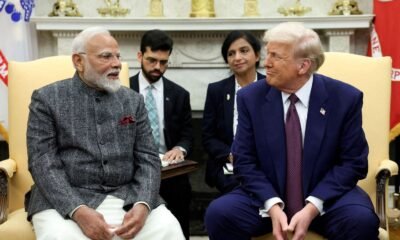Travel Guides & Articles
India-Pakistan missile race heats up, but China in crosshairs, too | India-Pakistan Tensions News
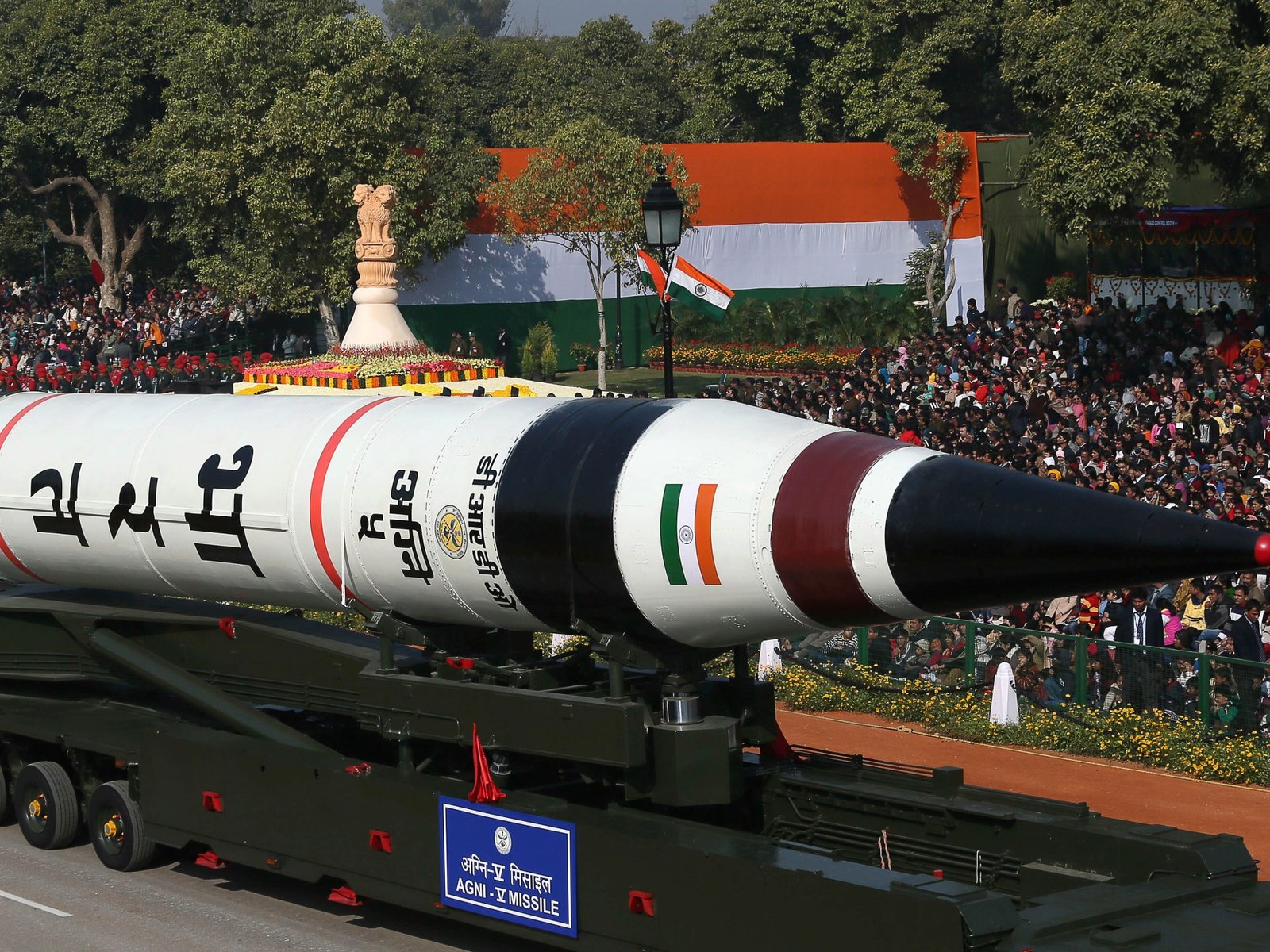
Islamabad, Pakistan – India on August 20 announced that it had successfully test-fired Agni-V, its intermediate-range ballistic missile, from a test range in Odisha on its eastern Bay of Bengal coast.
The Agni-V, meaning “fire” in Sanskrit, is 17.5 metres long, weighs 50,000kg, and can carry more than 1,000kg of nuclear or conventional payload. Capable of travelling more than 5,000km at hypersonic speeds of nearly 30,000km per hour, it is among the fastest ballistic missiles in the world.
The Agni test came exactly a week after Pakistan announced the formation of a new Army Rocket Force Command (ARFC), aimed, say experts, at plugging holes in its defensive posture exposed by India during the four-day conflict between the nuclear-armed neighbours in May.
But experts say the latest Indian test might be a message less for Pakistan and more for another neighbour that New Delhi is cautiously warming up to again: China.
The Agni’s range puts most of Asia, including China’s northern regions, and parts of Europe within reach. This was the missile’s 10th test since 2012 and its first since March last year, but its timing, say analysts, was significant.
It came just ahead of Indian Prime Minister Narendra Modi’s trip to China for the Shanghai Cooperation Organisation (SCO) summit, amid a thaw in ties – after years of tension over their disputed border – that has been accelerated by United States President Donald Trump’s tariff war against India. On Wednesday, the US tariffs on Indian goods doubled to 50 percent amid tensions over New Delhi’s oil purchases from Russia.
Yet despite that shift in ties with Beijing, India continues to view China as its primary threat in the neighbourhood, say experts, underscoring the complex relationship between the world’s two most populous nations. And it’s at China that India’s development of medium and long-range missiles is primarily aimed, they say.
India’s missile advantage over Pakistan
While India acknowledged losing an unspecified number of fighter jets during the May skirmish with Pakistan, it also inflicted significant damage on Pakistani military bases, particularly with its supersonic BrahMos cruise missiles.
The BrahMos, capable of carrying nuclear or conventional payloads of up to 300kg, has a range of about 500km. Its low altitude, terrain-hugging trajectory and blistering speed make it difficult to intercept, allowing it to penetrate Pakistani territory with relative ease.
Many experts argue that this context shows the Agni-V test is not directly linked to Pakistan’s announcement of the ARFC. Instead, they say, the test was likely a signal to China. Indian and Chinese troops were in an eyeball-to-eyeball standoff along their disputed Himalayan border for four years after a deadly clash in 2020, before Modi met Chinese President Xi Jinping in Russia in October 2024 to begin a process of detente.
Modi’s visit to China for the SCO summit on Sunday will be his first to that country since 2018. In the past, India has often felt betrayed by overtures to China, which, it claims, have frequently been followed by aggression from Beijing along their border.
“India’s requirement for a long-range, but not intercontinental, missile is dictated by its threat perception of China,” Manpreet Sethi, a distinguished fellow at the New Delhi-based Centre for Air Power Studies, told Al Jazeera.
“Agni-V is a nuclear-capable ballistic missile of 5,000km range, which India has been developing as part of its nuclear deterrence capability against China. It has no relevance to Pakistan,” Sethi added.
Christopher Clary, assistant professor of political science at the University at Albany, agreed.
“While the Agni-V might be usable against Pakistan, its primary mission would involve strikes on China,” he told Al Jazeera. “China’s east coast, where its most economically and politically important cities are situated, is hard to reach from India and requires long-range missiles.”
Missile race across South Asia
India and Pakistan have been steadily expanding their missile arsenals in recent years, unveiling new systems with increasing reach.
Before announcing the ARFC, Pakistan showcased the Fatah-4, a cruise missile with a 750km range and the capability to carry both conventional and nuclear warheads.
India, meanwhile, is working on Agni-VI, which is expected to have a range exceeding 10,000km and carry multiple independently targetable reentry vehicles (MIRVs), a capability already present in Agni-V.
MIRV-enabled missiles can carry several nuclear warheads, each capable of striking a separate target, significantly boosting their destructive potential.
Mansoor Ahmed, an honorary lecturer at the Strategic and Defence Studies Centre, Australian National University, said India’s latest test demonstrates its growing intercontinental missile capabilities.
“With India working on different variants of Agni with multiple capabilities, this test was a technological demonstrator for India’s emerging submarine-launched ballistic missile (SLBM) capability,” Ahmed said.
“Depending on the configuration of the warheads for India’s SLBMs, India will be able to deploy anywhere between 200-300 warheads on its SSBN force alone over the next decade,” he added. SSBNs (ship, submersible, ballistic, nuclear) are nuclear-powered submarines designed to carry SLBMs armed with nuclear warheads. India currently has two SSBNs in service, with two more under construction.
Pakistan, by contrast, does not possess long-range missiles or nuclear submarines. Its longest-range operational ballistic missile, the Shaheen-III, has a range of 2,750km.
“Pakistan also has South Asia’s first MIRV-enabled ballistic missile called Ababeel, which can strike up to 2,200km range, but it is the shortest-ranged MIRV-enabled system deployed by any nuclear-armed state,” Ahmed said.
Tughral Yamin, a former Pakistani army brigadier and nuclear policy scholar, said the countries’ missile ambitions reflect divergent priorities.
“Pakistan’s programme is entirely Indian-specific and defensive in nature, while India’s ambitions extend beyond the subcontinent. Its long-range systems are designed for global power projection, particularly vis-a-vis China, and to establish itself as a great power with credible deterrence against major states,” said Yamin, author of The Evolution of Nuclear Deterrence in South Asia.
But some experts say Pakistan’s missile development programme isn’t only about India.
Ashley J Tellis, the Tata Chair for Strategic Affairs at the Carnegie Endowment for International Peace (CEIP), said that while “India wants to be able to range China and Pakistan,” Islamabad is building the capability to keep Israel – and even the US – in its range, in addition to India.
“The conventional missile force in both countries is designed to strike critical targets without putting manned strike aircraft at risk,” Tellis told Al Jazeera.
US concerns over Pakistan’s ambitions, quiet acceptance of India’s rise
Pakistan’s missile programme came under intense spotlight in December last year when a senior White House official warned of Islamabad’s growing ambitions.
Jon Finer, serving in the then-Biden administration, described Pakistan’s pursuit of advanced missile technology as an “emerging threat” to the United States.
“If the trend continues, Pakistan will have the capability to strike targets well beyond South Asia, including in the United States,” Finer said during an event at the CEIP.
By contrast, Tellis said India’s growing arsenal is not viewed as destabilising by Washington or its allies.
“Pakistan’s capabilities in contrast are viewed as unsettling because the early history of its nuclear programme had anti-Western overtones, sentiments that have taken on a specific anti-US colouration after 9/11 and the Abbottabad raid,” Tellis explained, referring to the US capture of Osama bin Laden inside Pakistan in 2011.
Ahmed, the Canberra-based academic, said India’s long-range missile development is openly supported by Western powers as part of the US-led Asia Pacific strategy.
“The US and European powers have viewed and encouraged India to act as a net security provider. The India-US civil nuclear deal and the Nuclear Suppliers Group (NSG) waiver effectively gave India de facto nuclear weapons status without signing the Non-Proliferation Treaty (NPT),” he said.
The NPT is a Cold War-era treaty aimed at preventing the spread of nuclear weapons, promoting the peaceful use of nuclear energy and advancing the goal of nuclear disarmament. It formally recognises only the United States, Russia, China, France and Britain as nuclear weapons states.
But the 2008 waiver from the NSG – a club of 48 nations that sell nuclear material and technology – allowed India to engage in global nuclear trade despite not being an NPT signatory, a unique status that elevated its global standing.
Clary from the University of Albany, however, pointed out that unlike the Biden administration, the current Trump White House has not expressed any concerns about Pakistan’s missile programme – or about India’s Agni-V test.
“For now, so long as Pakistan keeps its missile tests limited to ranges already demonstrated by the Shaheen-III and Ababeel, I don’t expect Western governments to concern themselves overly with South Asia’s missile developments,” he said. “There are more than enough other problems to keep them busy.”
Travel Guides & Articles
PM Modi-Xi Jinping meeting: India and China to resume direct flights after five-year hiatus
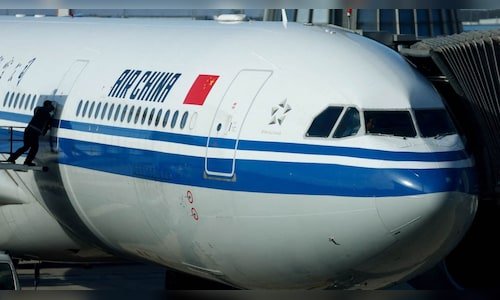
Air travel between the two countries was halted in early 2020 due to the COVID-19 pandemic and further disrupted following the deadly border clash in the Galwan Valley that year. Since then, passengers and cargo have been rerouted via third countries such as Thailand, Singapore, and Hong Kong, adding substantial time and cost to travel and trade.
Indian Prime Minister Narendra Modi confirmed the move on Saturday, a day beforer the Shanghai Cooperation Organisation (SCO) Summit and his meeting with Chinese President Xi Jinping, stating that both governments had agreed to restart direct flight services as relations between the two nations showed signs of improvement. “We are reopening one of Asia’s most important economic corridors,” Modi said, according to reports, adding that the decision would benefit businesses, students, and families across both countries.
Sharing my remarks during meeting with President Xi Jinping. https://t.co/pw1OAMBWdc
— Narendra Modi (@narendramodi) August 31, 2025
Also read | PM Modi meets Xi Jinping in Tianjin as SCO Summit gets underway
Before the suspension, traffic between India and China was considerable. Before the Pandemic in the financial year 2019, over 816,000 passengers travelled between the two nations, with Indian carriers such as Air India and IndiGo operating hundreds of monthly flights alongside Chinese airlines. Cargo movement was also significant, with nearly 30,000 tonnes shipped annually — higher than the cargo volume between India and the US.
The resumption of direct flights is expected to revitalise trade and tourism, as well as support Indian and Chinese companies with firm business ties. For students and professionals who previously relied on complex transit routes, the resumption of direct services will simplify travel and reduce costs.
No official schedule has yet been released, but aviation authorities in both countries are expected to approve routes in the coming weeks. Industry experts predict that carriers will initially resume limited services before expanding based on demand.
The move comes amid broader efforts to stabilise ties between New Delhi and Beijing, with high-level diplomatic engagements resuming and trade volumes gradually recovering. While tensions remain, the restoration of direct air links is being seen as a positive step toward normalising relations.
Travel Guides & Articles
Mumbai’s electric water taxi set for Sept launch
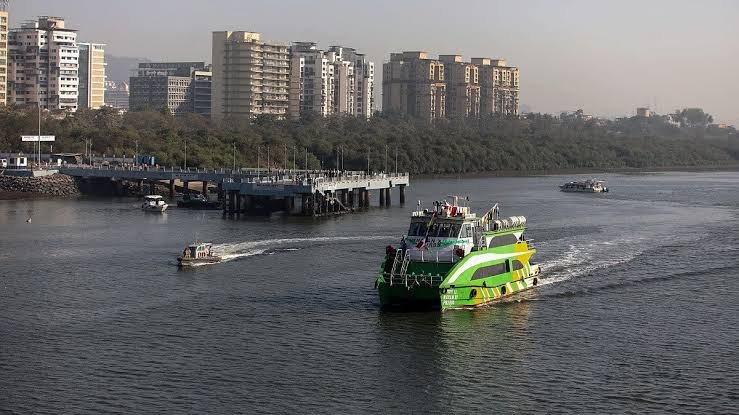
Mumbai’s much-awaited electric water taxi service is set to begin operations on September 22, promising a faster, cleaner, and more comfortable commute between Gateway of India/Mumbai Ferry Wharf and the Jawaharlal Nehru Port Authority (JNPA). The service will replace the existing wooden boats that currently ply the route, cutting travel time from over an hour to less than 40 minutes while offering an eco-friendly alternative.
Bharat Freight Group (BFG), which will manage the operations, has confirmed that two vessels will be introduced in the first phase. One is a hybrid boat powered by solar energy, an electric battery, and a diesel backup, while the other will be fully electric. Both boats can be charged in under an hour, ensuring quick turnaround times for smooth operations. This shift is expected to modernise water-based transport and reduce dependency on fuel-powered vessels.
In the second phase, the fleet will be expanded with four hydrogen-powered boats once the required generators are in place. These vessels will further strengthen Mumbai’s push toward sustainable transportation and align with broader environmental goals. Authorities believe that with this expansion, the water taxi network can become a reliable daily commute option for both office-goers and tourists.
The boats are made of fibre and glass and feature a European design, offering not only improved energy efficiency but also enhanced stability and passenger comfort. This makes them suitable for varied weather conditions and ensures a smoother ride across Mumbai’s busy waterways. The introduction of these vessels marks a significant upgrade over the older fleet in terms of safety and passenger experience.
BFG has also announced plans to expand the service beyond JNPA by adding new routes that will connect South Mumbai to Elephanta Caves, Belapur, Alibaug, and various harbour tourism circuits. This could open up new tourism opportunities and improve connectivity between key coastal destinations in the region.
The launch of Mumbai’s electric water taxi service is being hailed as a milestone in the city’s transport evolution, combining modern technology, environmental responsibility, and improved efficiency. It is expected to ease congestion on roads, offer a scenic travel alternative, and serve as a model for other coastal cities in India looking to modernise their transport infrastructure.
Travel Guides & Articles
Travel slump: June sees a dip in number of Indian visitors in US; first decline since 2001 | India News
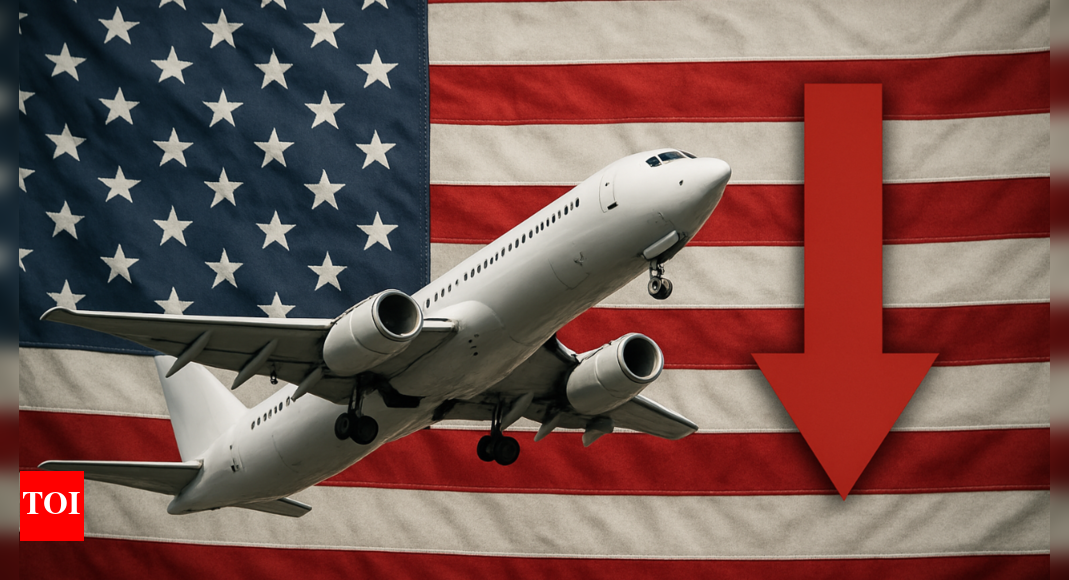
NEW DELHI: The desi peak outbound travel month of June saw a decline in the number of Indian visitors to the US in 2025 over the previous year for the first time this Millennium — barring the Covid period. With 2.1 lakh Indians headed to America in June, the number was 8% lower than 2.3 lakh in same month last year, according to data from US commerce dept’s National Travel and Tourism Office (NTTO). The provisional figure for this July shows 5.5% fall over same month last year.Overall, the US has been seeing a decline in international visitors — and not just from India — in recent months. NTTO says total non-US resident international visitor volume to the US decreased 6.2% in June 2025 over June 2024; 7% in May; 8% in March; 1.9% in Feb. This Jan saw 4.7% increase over same period last year and April was up 1.3%.
India is the fourth largest source market for international visitors for the US. Since the two biggest source markets — Mexico and Canada — share a land border, India is the second biggest overseas source market with the UK being the biggest. “Combined, these top five source markets (with Brazil being the fifth) accounted for 59.4% of total international arrivals” this June, says NTTO.While travel industry biggies here say it is too early to pin the blame for fall in Indian visitor numbers on the stricter visa regime adopted by President Trump in his second presidency which has seen souring of India-US ties, the impact could be more pronounced going ahead if the same continues. The reason: US mostly issues 10-year validity multiple entry visitor and business visas (B1/B2) so people who already have the same can keep travelling. But if new visas get impacted for reasons like long appointment time or stricter issuance norms, then with a time lag the impact will be visible.“We are seeing a very visible impact on student segment this year due to delay in visa issuance even after people securing college admission. Historically, the biggest categories of visitors headed from India to the US have been visiting friends & relatives (VFR), business and students. The US was never a top leisure destination for Indians. That space has been led by Southeast Asia, Middle East and Europe. North America came after that. Right now apart from students we are not seeing a dramatic impact on the other segments but if new visa issuances are affected, they will also be hit with a certain time lag,” said a leading travel agent.With an Indian diaspora of over 50 lakh, the US sees great demand for travel from the India. NTTO data shows since the start of this Millennium, every June had seen a jump from same month in last year till 2025 broke that trend.April was a great month as far as outbound from India is concerned. According to Indian tourism ministry data, 29 lakh Indians travelled abroad this April with the maximum going to the UAE followed by Saudi Arabia, Thailand, Singapore and the US.“But after May and June, travel was severely impacted following the Pehelgam terror attack, closure of Pakistan airspace (which continues for Indian carriers & vice versa) and then the Air India Ahmedabad crash. So every destination, especially in the west, was impacted badly. The drop to the US may not be in isolation as fast as western destinations go,” said another travel biggie.
-
Tools & Platforms3 weeks ago
Building Trust in Military AI Starts with Opening the Black Box – War on the Rocks
-

 Ethics & Policy1 month ago
Ethics & Policy1 month agoSDAIA Supports Saudi Arabia’s Leadership in Shaping Global AI Ethics, Policy, and Research – وكالة الأنباء السعودية
-

 Events & Conferences3 months ago
Events & Conferences3 months agoJourney to 1000 models: Scaling Instagram’s recommendation system
-

 Business2 days ago
Business2 days agoThe Guardian view on Trump and the Fed: independence is no substitute for accountability | Editorial
-

 Jobs & Careers2 months ago
Jobs & Careers2 months agoMumbai-based Perplexity Alternative Has 60k+ Users Without Funding
-

 Funding & Business2 months ago
Funding & Business2 months agoKayak and Expedia race to build AI travel agents that turn social posts into itineraries
-

 Education2 months ago
Education2 months agoVEX Robotics launches AI-powered classroom robotics system
-

 Podcasts & Talks2 months ago
Podcasts & Talks2 months agoHappy 4th of July! 🎆 Made with Veo 3 in Gemini
-

 Podcasts & Talks2 months ago
Podcasts & Talks2 months agoOpenAI 🤝 @teamganassi
-

 Jobs & Careers2 months ago
Jobs & Careers2 months agoAstrophel Aerospace Raises ₹6.84 Crore to Build Reusable Launch Vehicle












